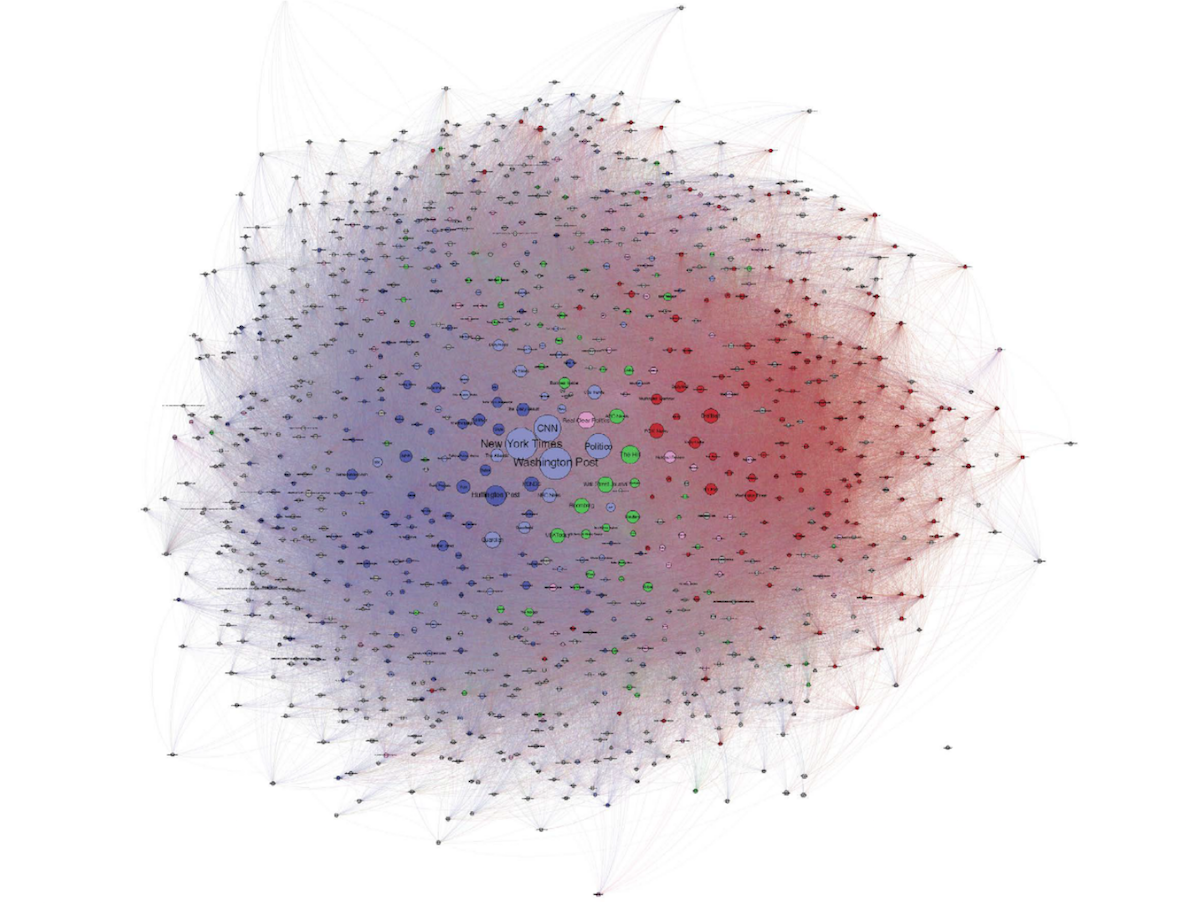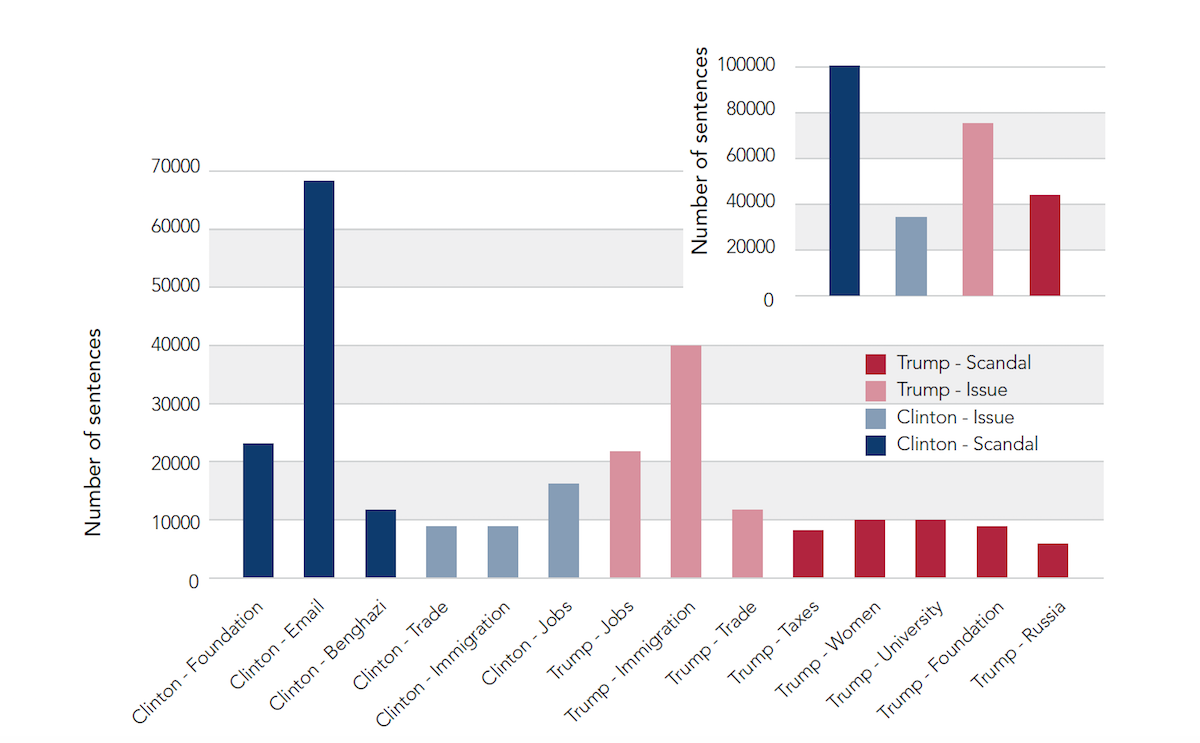Partisanship, Propaganda, & Disinformation: Online Media & the 2016 U.S. Presidential Election is the long and completely descriptive title of a comprehensive study published by Harvard this week. It paints a picture of how the collective American electoral mind works, and the picture is not pretty; it doesn’t seem to matter if media coverage is good or ill: repetition works.
The 140-page study depicts a three-step flow leading up to the election: Trump received far more media play; Trump’s agenda controlled the coverage; and right-wing media are more polarized to the extreme right than left-wing media, which hew closer to the center.
The media covered Trump exponentially more than Clinton. While most of the coverage was negative, it placed Trump front-and-center in the voters’ minds.

It’s a longstanding principle in advertising that coverage is coverage, and repetition works. “It doesn’t matter what they say, as long as they spell your name right,” goes the dictum, and Trump’s name was spelled right over and over again on media of all political persuasions. MSNBC once held a static shot of an empty podium for nearly an hour, waiting for Trump’s entrance.

Decades ago, Proctor & Gamble introduced a new toilet paper brand called Charmin. They launched it with the most annoying of commercials, and you probably remember the phrase, “Please don’t squeeze the Charmin.” Charmin launched successfully because the commercial was so annoying that people talked about it. What’s offensive, when repeated, becomes what’s normal. Charmin is a Top-5 toilet paper brand to this day, and if the logic holds Trump could have a two-term presidency.
In the current media ecosystem, polarization of viewpoints is not symmetrical. The right and the left have not moved equally; right-wing media have become more extreme, and left-wing media remain centrist. The study visualizes polarization with this cloud chart:

In this chart, you can see that the center of attention has shifted to the far right. Center-right media have the least attention. Therefore, in the confirmation-bias bubble, conservative voters got continuous reinforcement of far-right views. The study also found that Facebook’s newsfeed especially gravitated to the extreme right.
Not only did Trump receive more coverage, and not only was that coverage amplified in the far-right echo-chamber, but the talking points floated by his campaign took hold and dominated stories and spin. Trump’s campaign controlled the narrative:

Clinton tried to build a narrative of issues, but they were drowned in a flood of stories about emails and the Clinton Foundation. Meanwhile, Trump received more issue-oriented coverage, even though his scandals were clearly evident.
What can we take from this? On a timely and specific note, the study found that immigration was the most-covered issue of the campaign. The Trump administration’s recent move to end DACA is, therefore, a predictable follow-through of this narrative. We might also look at the second-most-covered campaign issue, which was Islam and Muslims, and, with trepidation, predict that the Trump administration may also follow through on that narrative in the near future.
In the wider landscape, the takeaway is that what we concentrate on, we become. The more we focus on noise and divisiveness, the more noisy and divisive we become ourselves. I’m not saying put your head in the sand and stop paying attention to the news. We do need to know what’s going on; we need to pay attention. Yet there has not been a time in recent memory more needing the healing balm of creative culture. Creative work illuminates who we are and forms the future pathways we may choose to follow. Artists are bringers of social change and collective awareness.
Creative work satisfies, provides balance, stimulates the aesthetic, stirs the spirit, and, in a political sense, provides diverse people with a place for focus. That’s why I chose the image at the top of this article, instead of a clickbait-favorable photo of 45.
Top image: A garden in France. Photo by Adam Leipzig.
[alert type=alert-white ]Please consider making a tax-deductible donation now so we can keep publishing strong creative voices.[/alert]
Save
Save
Save
Save
